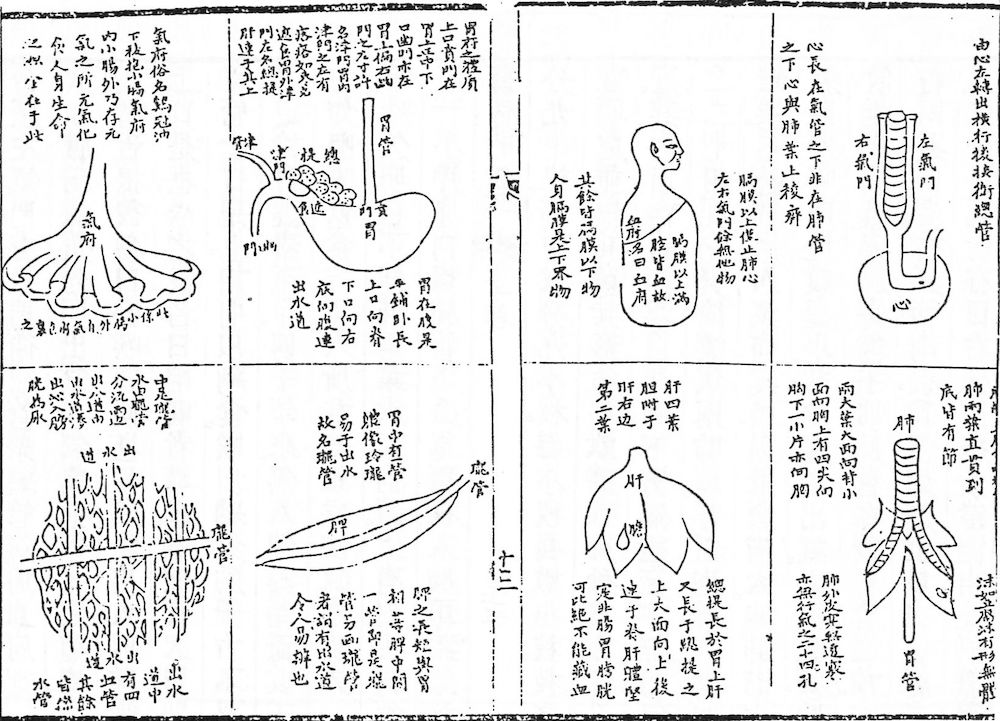Yilin gaicuo 醫林改錯 "Corrections on the errors of the many medical books" was written during the mid-Qing period 清 (1644-1911) by Wang Qingren 王清任 (1768-1831), also called Quanren 全任, courtesy name Xunchen 勛臣, from Yutian 玉田 (today in Hebei). Wang had once been a military officer, but then discovered his interest in medicine. He opened a chemist's shop in Beijing and studied traditional books on healing diseases. During his studies, he became aware that the human viscera (zangfu 臟腑) were decisive for the origin of diseases and thus also the point to start with treatment. Yet he found that the understanding of viscera as presented in ancient books - including eminent works like Huangdi neijing 黃帝內經 - was not completely correct, and thus decided to write a book to correct wrong statements in old handbooks.
He carefully observed in practice the human internal organs and their functions. For his studies of internal organs he made use of corpses abandoned during a hunger crisis. These observations were very important for the many drawings in his book.
Wang's book of 2 juan length corrects many mistakes concerning the human anatomy as described in traditional texts, and provided, for instance, accurate and detailed descriptions of the lungs and trachea. Wang also described the connection of the aorta with the various organs in the chest and the back. His descriptions of the anatomical structure of the gastrointestinal tract and the intra-abdominal organs are relatively correct and thus help to rectify misleading statements.
 |
1830 edition. |
The Yilin gaicuo also emphasizes the etiology and pathology of blood stasis (xueyu 血瘀), and puts forward principles of treatment to invigorate vital energy (qi 氣), promote blood circulation and removing blood stasis, and also formulate some prescriptions for these purposes. Wang’s proposals have their own original ideas, and indeed show good effects on certain diseases and syndromes.
However, because of limited conditions, there are still some anatomical mistakes found in the book, partially due to the fact that Wang studies corpses in decay.
His book was finished in 1830. It was reprinted in 1879 by the Saoye Shanfang Studio 掃葉山房. In 1996, the Shanghai Kexue Jishu Press published a modern edition.